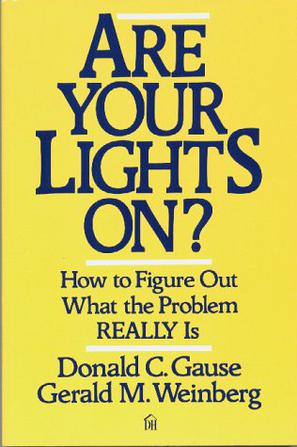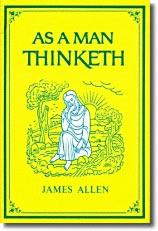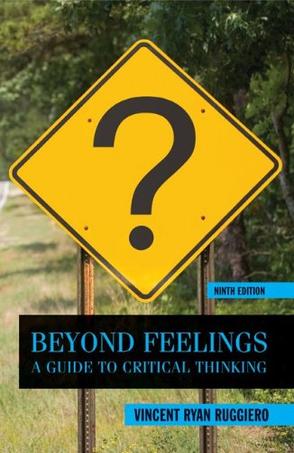-

Are Your Lights On?
-

As a Man Thinketh
are its fruits; thus does a man garner in the sweet and bitter fruitage of his own husbandry. "Thought in the mind hath made us, What we are By thought was wrought and built. If a man's mind Hath evil thoughts, pain comes on him as comes The wheel the ox behind.... ..If one endure In purity of thought, joy follows him As his own shadow--sure." Man is a growth by law, and not a creation by artifice, and cause and effect is as absolute and undeviating in the hidden realm of thought as in the world of visible and material things. A noble and Godlike character is not a thing of favour or chance, but is the natural result of continued effort in right thinking, the effect of long-cherished association with Godlike thoughts. An ignoble and bestial character, by the same process, is the result of the continued harbouring of grovelling thoughts. Man is made or unmade by himself; in the armoury of thought he forges the weapons by which he destroys himself; he also fashions the tools with which he builds for -

Beyond Feelings
This succinct, interdisciplinary introduction to critical thinking successfully dares students to question their own assumptions and to enlarge their thinking through the analysis of the most common problems associated with everyday reasoning. The text offers a unique and effective organization: Part I explains the fundamental concepts; Part II describes the most common barriers to critical thinking; Part III offers strategies for overcoming those barriers. -

Beyond Feelings
This succinct, interdisciplinary introduction to critical thinking successfully dares students to question their own assumptions and to enlarge their thinking through the analysis of the most common problems associated with everyday reasoning. The text offers a unique and effective organization: Part I explains the fundamental concepts; Part II describes the most common barriers to critical thinking; Part III offers strategies for overcoming those barriers. -

How to Solve It
A perennial bestseller by eminent mathematician G. Polya, "How to Solve It" will show anyone in any field how to think straight. In lucid and appealing prose, Polya reveals how the mathematical method of demonstrating a proof or finding an unknown can be of help in attacking any problem that can be "reasoned" out - from building a bridge to winning a game of anagrams. Generations of readers have relished Polya's deft - indeed, brilliant - instructions on stripping away irrelevancies and going straight to the heart of the problem. In this best-selling classic, George Polya revealed how the mathematical method of demonstrating a proof or finding an unknown can be of help in attacking any problem that can be "reasoned" out - from building a bridge to winning a game of anagrams.Generations of readers have relished Polya's deft instructions on stripping away irrelevancies and going straight to the heart of a problem. "How to Solve It" popularized heuristics, the art and science of discovery and invention. It has been in print continuously since 1945 and has been translated into twenty-three different languages. Polya was one of the most influential mathematicians of the twentieth century. He made important contributions to a great variety of mathematical research: from complex analysis to mathematical physics, number theory, probability, geometry, astronomy, and combinatorics. He was also an extraordinary teacher - he taught until he was ninety - and maintained a strong interest in pedagogical matters throughout his long career.In addition to "How to Solve It", he published a two-volume work on the topic of problem solving, "Mathematics of Plausible Reasoning", also with Princeton. Polya is one of the most frequently quoted mathematicians, and the following statements from "How to Solve It" make clear why: "My method to overcome a difficulty is to go around it." "Geometry is the science of correct reasoning on incorrect figures." "In order to solve this differential equation you look at it till a solution occurs to you." -

Critical Thinking
Critical Thinking is about becoming a better thinker in every aspect of your life: in your career, and as a consumer, citizen, friend, parent, and lover. Discover the core skills of effective thinking; then analyze your own thought processes, identify weaknesses, and overcome them. Learn how to translate more effective thinking into better decisions, less frustration, more wealth Q and above all, greater confidence to pursue and achieve your most important goals in life.